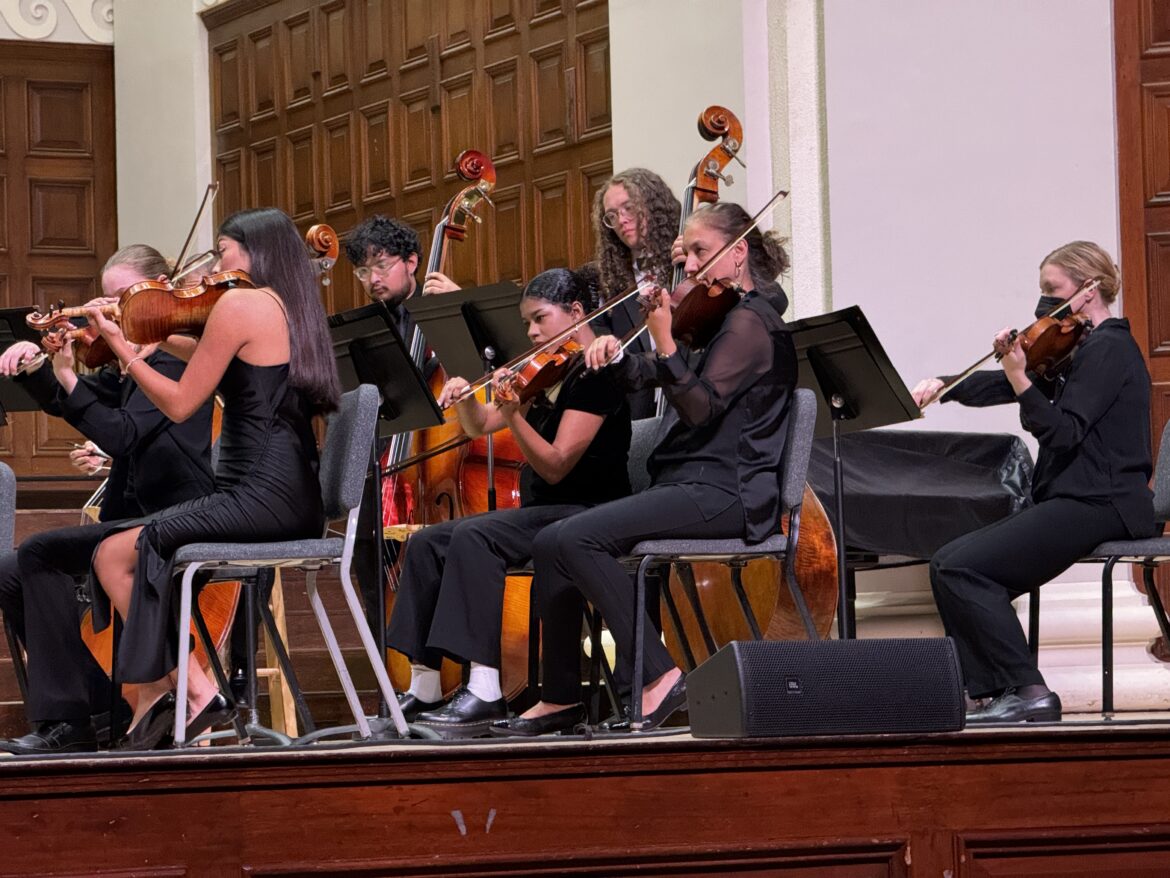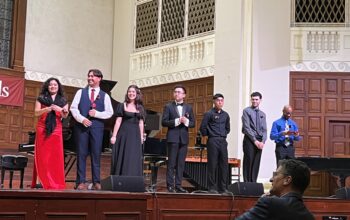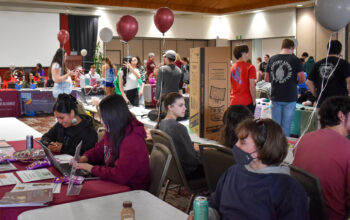On Oct. 31, the University of Redlands Symphony Orchestra held its first concert of the year. On the program was Edvard Grieg’s Piano Concerto, played by Kelsie Valenzuela ‘25. The orchestra also held the US premiere of “Dance of Cheo and Len Dong,” a composition by Vietnamese composer Đặng Hữu Phúc (b. 1953). Alongside those two pieces, the groups also played pieces by Zoltán Kodály and Dmitri Shostakovich.
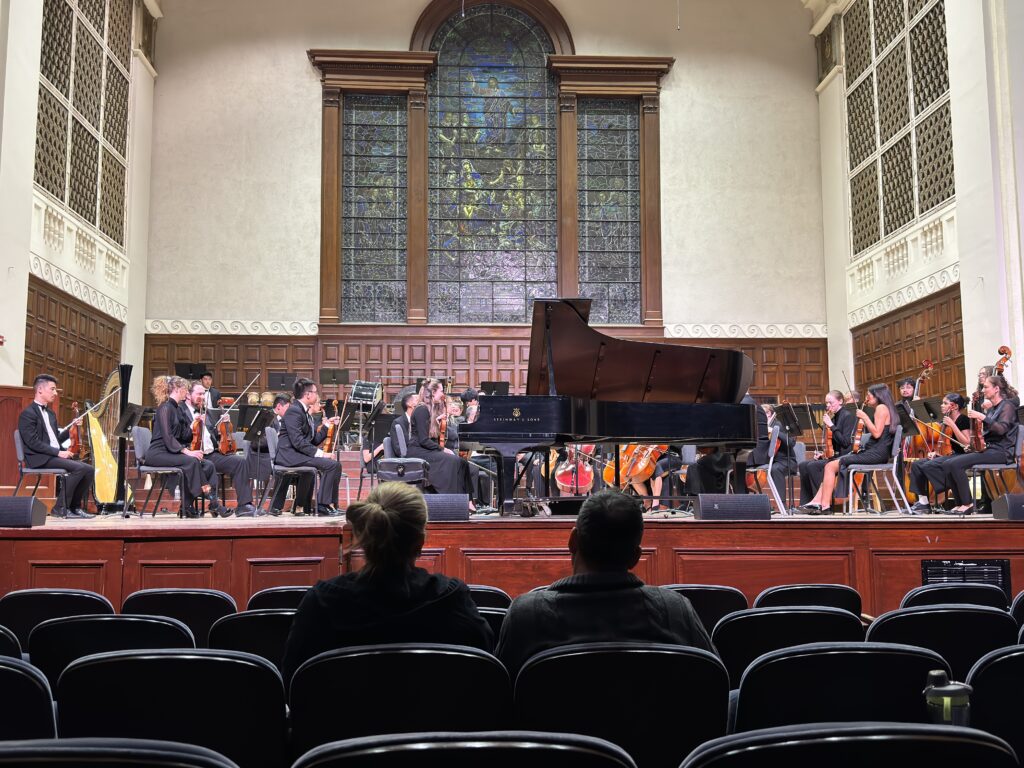
“Dances of Cheo and Len Dong” was written in 2019 by Đặng Hữu Phúc and is a beautiful whirlwind of recurring melodies, themes and effortless changes between different styles throughout the piece. One cannot help but be swept away by the fluidity of how the music steadily marches on, blending melody and countermelody into a gorgeous work of art. The director Co Nguyen is a longtime friend of the composer and offered to premiere the piece after the Redlands Symphony failed to premiere it during the COVID-19 lockdown.
“Tahiti Trot (Tea for Two)” by Dmitri Shostakovich is a piece in stark contrast to the rest of the performances. It is a lighthearted, jaunty piece, reminiscent of a walk along a park river in Paris, or in a cafe sipping tea. It’s airy and soft, with an almost comedic feeling. This piece was conducted by graduate student Abigail Rodriguez ‘25. When asked about how she thought the performance was, Rodriguez said, “I think it was the smoothest it’s ever run. I’m really proud of everyone!”
“Dances of Galánta” by Zoltán Kodály is a riveting piece of music because of how many moving parts there are. It starts off quite dark, prominently featuring the clarinet, then moves to the main bulk of the piece, the four dance sections. One dance is a playful, flute-heavy section that holds within it moments of extreme intensity. The next is faster, a counter to the slower sections preceding it before returning to its predecessor’s somberness. The third dance is a back-and-forth between the string sections darkness and the wind sections light. The fourth and final section is a fast paced passage exchanging melodies between the strings, winds, and whole orchestra. The piece ends with an intense recapitulation of the opening themes, putting an end to this monstrous piece of music.
The final piece played was Edvard Grieg’s Piano Concerto in A Minor, performed by Kelsie Valenzuela. It is a harmonytour-de-force of contrasting themes, ideas, and pays homage to the composer’s homeland in its third movement, influenced by the folk dances of southern Norway.
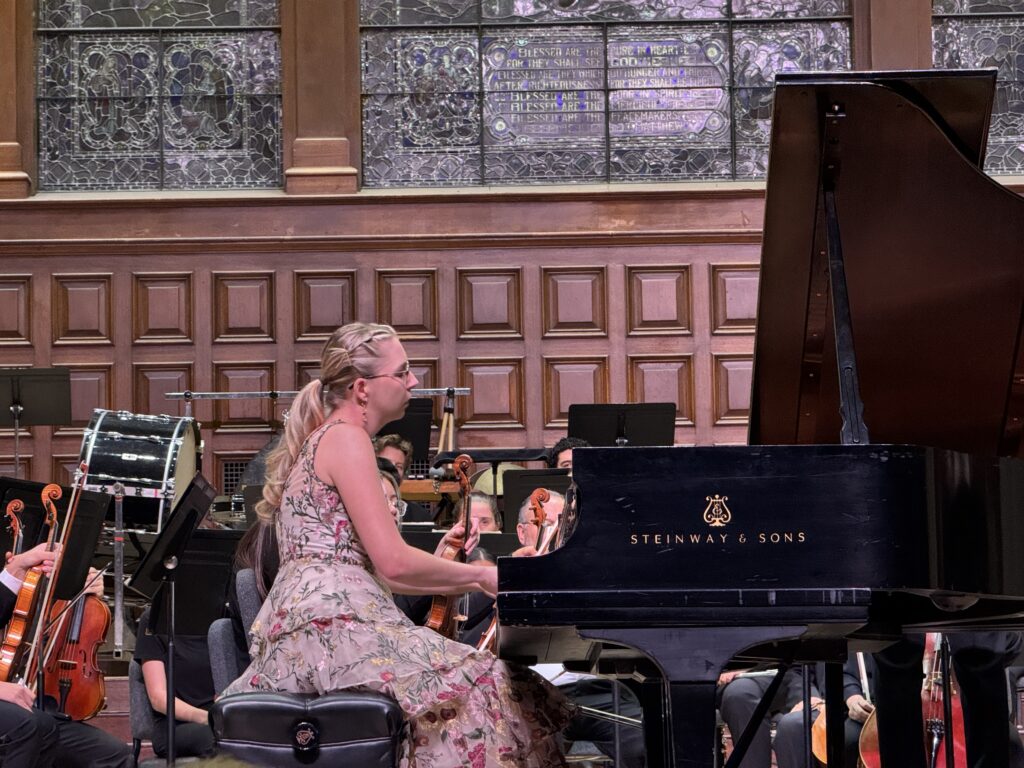
The first movement is reminiscent of Schumann’s piano concerto, with a commanding call to action that is countered by a pensive melody played by cello. Throughout the opening movement, the piano moves between heart touching melodies, to more jagged, pointed rhythmic melodies before being interjected by the accompanying orchestra.
The second movement is opened by a warm, moving melody for strings, studded brightly like stars by the piano before being restated forcefully shortly afterwards by the soloist. The second movement is short, yet it manages to stand out for its beauty even when compared to the other two movements from this piece.
The final movement opens with a very forcefully rhythmic dance shared between the soloist and orchestra before giving way to the movement’s second theme. It then goes into a reprise of the first theme which is thunderously interrupted by orchestral chords, and ends in a majestic restatement of the prevailing lyrical theme, with soloist and orchestra in eloquent accord.
The audience was composed of many students, faculty members, and a variety of parents, family members, and other spectators all joining together to witness this spectacular concert. One audience member, Paige Nuenswander ‘27, was moved by the performance.
“I’ve actually never been to a symphony orchestra performance before, so this was an experience for me,” Nuenswander said. “It seems like something that would play in the background of a book”
The first orchestra concert of the year was a beautiful program made out of both classical and contemporary pieces. It was full of emotion, at times taking the audience through them at breakneck speeds, but it always gave the concertgoers time to breathe out, relax, and enjoy the show.
Photos by Lane Eppenberger.

